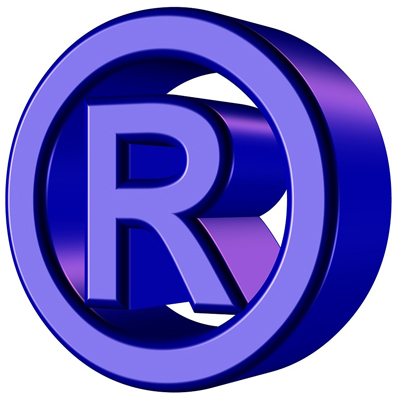This is Part 3 from 125 Building Blocks for Your Bakery Business

In this chapter, we will examine your bakery brand concept and determine if it’s viable.
Define Your Brand Name
Your brand is your business identity. It is the face and personality of all that you sell.
Your brand name should ideally be short and sweet. If you can make it one word, that’s ideal. Two words are also good. Three words or more gets complicated and will be more difficult for your customers to remember. I recommend using a business name generator to help you think of ideas.
As you brainstorm about your brand name, type it into a search engine like Google to see what pops up. Avoid bakery names that are already being used. Even if that bakery is in a different part of the country or elsewhere in the world, it still has the potential to confuse your customers. Try to think of something unique.
Along those same lines, don’t choose a name for which is there is already a prominent existing business. Even if the business is not related to yours in terms of what it sells, it will probably be parked on the dot com and the Twitter handle, the Instagram handle and the YouTube channel, which means you won’t be able to secure those spots for your own.
Some people choose to tie their brand name in with their personal identity. “Chloe’s Cakes” for example, is a common type of bakery name. If you go this route, make sure there are no other Chloe’s Cakes in existence. Also consider, what if your bakery business grows so large that you are no longer the one who’s producing the cakes? What if your bakery turns into a chain? Then you couldn’t possibly be at every location at once. Customers who walk into a store named “Chloe’s Cakes” will expect to meet a person named Chloe. They may be disappointed when you are not there, as your brand name implies. Furthermore, it will interfere with selling the business if the brand is attached to someone’s name. It’s probably better to come up with a concept that can transfer ownership more easily.
Ideally, your brand encompasses all that your business offers now as well as all it could potentially offer in the future. Don’t just think about what you’re making today. Think about next year. Think about 5, 10, 20+ years down the line. What might your business look like then? Consider the best possible scenario if your business expands in many different directions.
If you dream to one day expand your cake business to offer a more diverse array of dessert options, then “Chloe’s Cakes” is too specific. You will grow out of it. Perhaps “Chloe’s Desserts” makes more sense. If you dream to one day sell snacks or savory menu options then “Chloe’s Desserts” is also too specific. In that case, something like “Chloe’s Homemade” or “Chloe’s Kitchen” makes more sense. Make sure you give yourself enough room to grow.
Pick Keywords

Keywords are the kinds of words and phrases that potential customers type into search engines when they are seeking content and information such as local bakery listings. Keywords are the primary bridge between customers and sellers of food.
Gone are the days of the yellow pages, when customers searched business listings by category, which means gone are the days when having a clever business name helped a business stand out on the page. Nowadays, brand names that involve puns or funny spellings such as “kake” are more likely to fail with search engines.
We are living in an era when visibility hinges entirely on the readability of our content. The more straightforward and keyword-oriented a business name is, the more likely it is to be found.
You can read more about keywords in the chapter on website design.
Select a Web Domain
At the same time that you are brainstorming brand name ideas, I recommend doing a domain name search. The domain is part of a URL, which stands for uniform resource locator, which refers to the web address for each website. For example, the URL for my website is https://wickedgoodies.com. Its abbreviated version, WickedGoodies.com is the domain name.
Each domain name is like a slice of Internet real estate. In the realm of web domains, your neighborhood consists not of people who operate in close geographical proximity to you but of other businesses that share the same concept or similar domain. Just as it’s important for retail bakery start-ups to do geographical mapping of existing local bakery businesses, it is also necessary to research existing domains that are in the same neighborhood as yours so that you don’t choose one that has already cornered the market.
Sometimes, there is no active website listed under your desired name but the dot com has already been claimed. In that case, you are still better off thinking of a different name. GoDaddy is a reputable web host with an excellent free tool for running a domain name search. The benefit of using their tool is that in case the dot com you are looking for is unavailable, they will provide similar suggestions based on your keywords. Although search engines continue to favor dot coms for business listings, now we are seeing more options available in terms of suffixes. Perhaps one day, alternative suffixes will become more commonplace. However for now, the dot com still reigns.
My Domain Name Mishap
I made a mistake when I started Wicked Goodies. I fell too hard in love with that business name. At the time, WickedGoodies.com was owned by someone but it was not being used. The site was blank. I noticed that it was due to expire soon though, so I bought the dot net instead thinking I would scoop up the dot com as soon as it became available. However, it didn’t work out as I had hoped. The same month that I launched my dot net site in California, the owner of the dot com launched their site in Massachusetts. www.WickedGoodies.com turned out to be a bakery business as well. The similarity caused tremendous confusion for my customers. Years later, to solve the problem, I ended up buying the dot com from its owner, whose business didn’t endure. I paid a hefty sum for it. Don’t make the same mistakes as me!
Research Trademarks

In addition to checking if your brand name is already occupied on the World Wide Web, it’s important to check to see if any aspect of it is trademarked. Trademark information is publicly listed on the site, Trademarkia. Check to see if both your full brand name and each element of it are trademarked.
Trademarks work by category, so it’s okay if a business that is not cake-related shares your name. However it’s smart to avoid any brand name that is similar to another bakery business (anywhere in the world).
Trademarking your own business name is not a requirement, especially not for small cottage bakeries. There are considerable fees and paperwork involved with the process. It can be difficult to accomplish without a lawyer. I wouldn’t bother with it if your business is on the hobby end of the spectrum.
The benefit to owning a trademark is that it grants you the right to prevent similar, competing businesses from operating under the same name. That sort of redundancy causes confusion in the marketplace. The only way to control it from happening is to own the trademark. Serious businesses with high growth potential are good candidates for trademarking both their name and logo.
Write a Mission Statement
If you are having trouble thinking of a brand name, stop and consider your mission statement for a moment. Every business should have one. Your mission statement is a list of concepts that best represent what the business intends to accomplish. Here is my mission statement:
Core Values of Wicked Goodies
1. To inspire and delight others.
2. To encourage creativity and entrepreneurship.
3. To share and trade baking information in order to help move our collective knowledge forward.
As your business evolves, you can update your mission statement to reflect any changes in your goals. Reviewing it will help maintain allegiance with your brand’s identity. It will keep you in line with your principles.
Write Your Tagline
Every brand needs a tagline. The tagline is a short phrase that follows the brand name, which further defines your business. In all likelihood, it will be an abbreviated version of your mission statement. It should be concise, like the subtitle of a book. It should not contain any of the same words that your brand name contains. Instead, it should hit on as many of your remaining top keywords.
My tagline is baking adventures, tips & tutorials. In five words, it hits on the heart of what I offer readers. I could include recipes but that’s not primarily my specialty. I am more in the business of instruction and entertainment, therefore my tagline focuses on those two things. That way, visitors to my site know exactly what kind of information it is likely to contain.
Tag Line Examples
- Homemade desserts inspired by Grandma
- Authentic Caribbean sweets
- Sugar-free, guilt-free indulgences
- Hand-pressed pies, tarts & quiches
Make Sure It’s Recognizable
Your brand name should be specific enough to be self-explanatory. A good litmus test is to tell your friends about it. If, when you tell them your brand name, they seem confused, that’s not a good sign. If you have to explain what your brand name means or why you chose it, then it’s probably not an effective title. A strong brand name requires zero explanation. Someone who doesn’t know you at all should be able to understand it.
Branding Checklist
- Before picking your business name, write your mission statement.
- Write a list of all the directions in which your business could possibly go.
- Based on the above, make a list of keywords related to those concepts.
- Mix and match them or even mash words together, brainstorming business names.
- Use a business name generator to explore more possibilities.
- Type each idea into Google search. If a business pops up, cross that option off your list.
- Type each remaining idea into the GoDaddy domain name search.
- Narrow down your options to names for which there is an available domain (ideally the dot com).
- Type each name along with the word “trademark” into a search engine. Check to make sure none of the elements of your choices have been trademarked.
- Go to your local city’s business name listing and type in your choices to make sure none of your options have already been claimed.
- Narrow down your options to three choices.
- Ask your friends/family to weigh in on the three options by picking their favorites.
- Wait a week.
- Ask, without any prompting, to see if those same people can recall the name they picked. If they can, that means it’s “sticky,” i.e. memorable and easy to remember. That’s the kind of name you want.
- Talk to random people who don’t know about your business concept. Without giving any other information, tell them the name. See if they can guess what kind of business it is. If they can, that’s a good sign. If they can’t, it’s not a deal breaker but you may want to consider one of your other choices.
- Double check: does it have at least one keyword in it?
This is the end of Part 3 from 125 Building Blocks for Your Bakery Business. Return to the Table of Contents or proceed to Part 4 – Bakery Logo Design

Related Material





